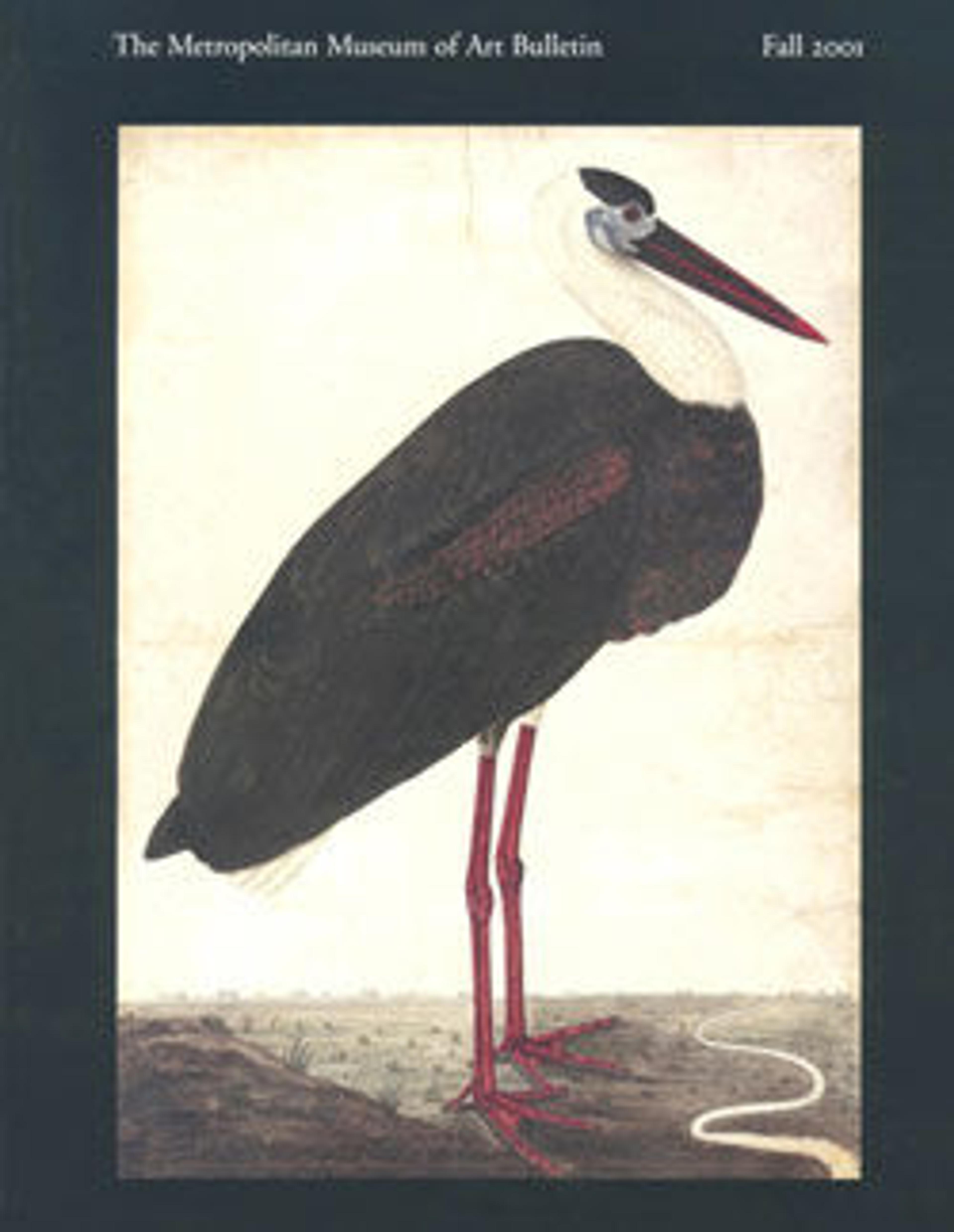Rhyton with female head
This vessel belongs to a rare class of glazed ceramic rhytons with female heads and animal-shaped spouts. The upper part is in the form of a vase with one handle (now lost). It appears as a tall bulbous crown above the head (made from two half-molds), which displays puffy cheeks, thickly lined eyes and brows, and small lips. The richly patterned "melon" coiffure is embellished by a diadem of wheat stalks with a band that includes a palmette, a crescent and star, and a rosette. Below a necklace the vessel tapers into a bull's head with a pouring hole at the mouth. The diadem motifs may identify the head as that of the goddess Nana, daughter of the moon god and sister of the sun god. This nature and astral deity, although first seen in Mesopotamian texts – she is referred to in texts from Esagila, the Temple of Marduk in Babylon, as "the power over princes and the scepter of kings" – but may have been Iranian in origin. She was represented in Parthian and Kushan art and widely worshiped in Mesopotamia, Iran, and Central Asia.
Artwork Details
- Title: Rhyton with female head
- Period: late Parthian–early Sasanian
- Date: ca. 3rd century CE
- Geography: Mesopotamia
- Culture: Parthian or Sasanian
- Medium: Ceramic, glazed
- Dimensions: H. 15 x W. 6 in. (38.1 x 15.2 cm)
- Credit Line: Purchase, Gift of Dr. Mortimer D. Sackler, Teresa Sackler and Family, and 2000 Benefit Fund, 2001
- Object Number: 2001.178
- Curatorial Department: Ancient West Asian Art
More Artwork
Research Resources
The Met provides unparalleled resources for research and welcomes an international community of students and scholars. The Met's Open Access API is where creators and researchers can connect to the The Met collection. Open Access data and public domain images are available for unrestricted commercial and noncommercial use without permission or fee.
To request images under copyright and other restrictions, please use this Image Request form.
Feedback
We continue to research and examine historical and cultural context for objects in The Met collection. If you have comments or questions about this object record, please contact us using the form below. The Museum looks forward to receiving your comments.
